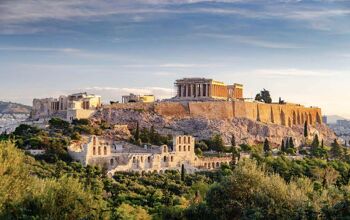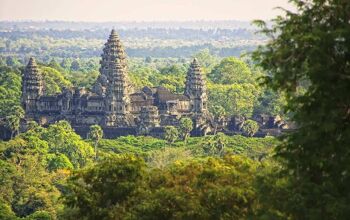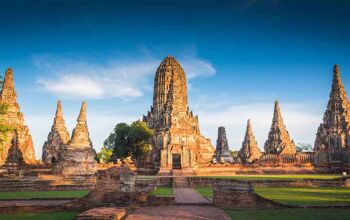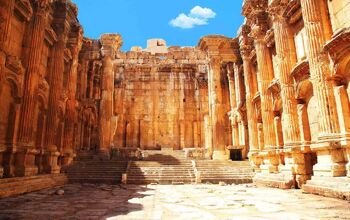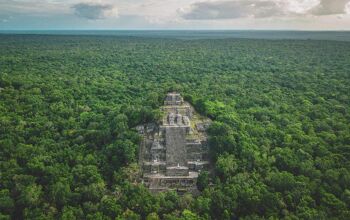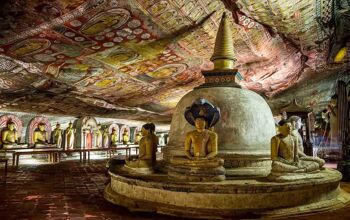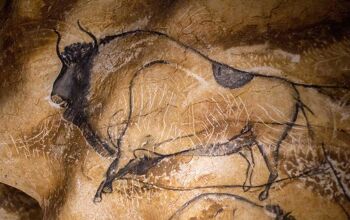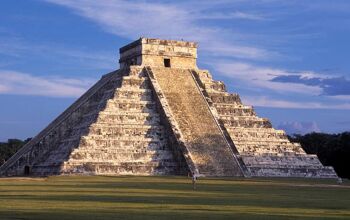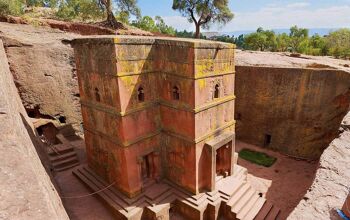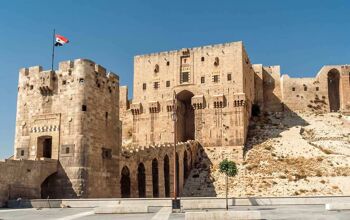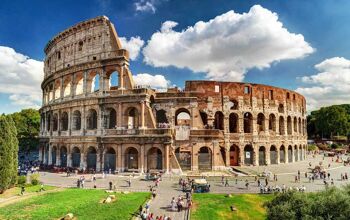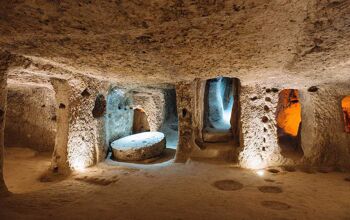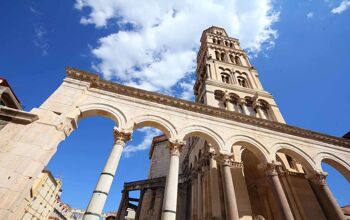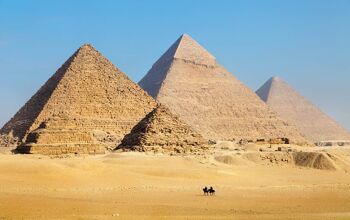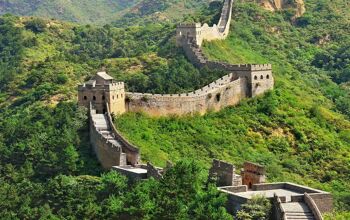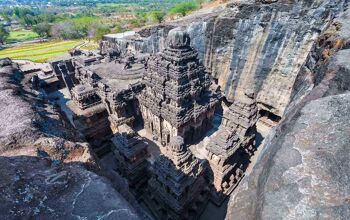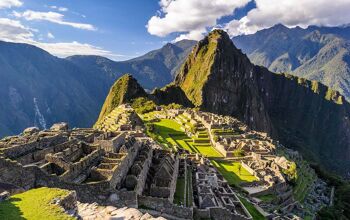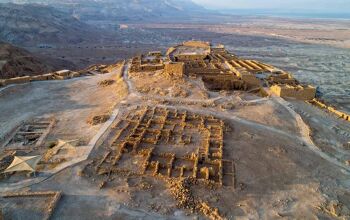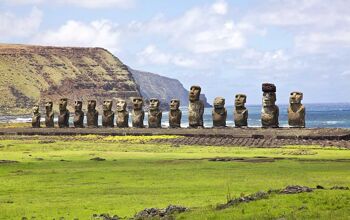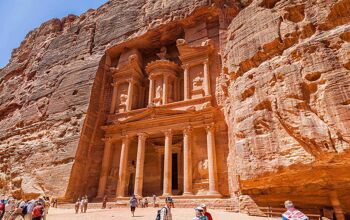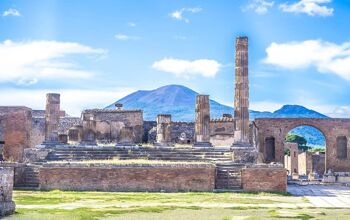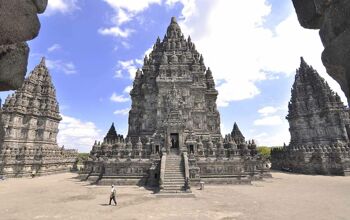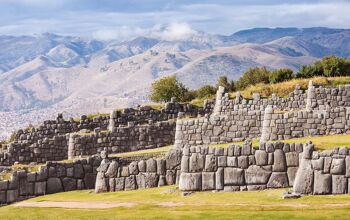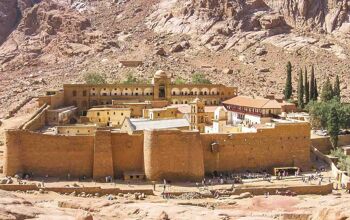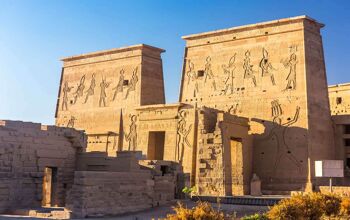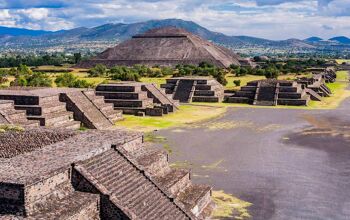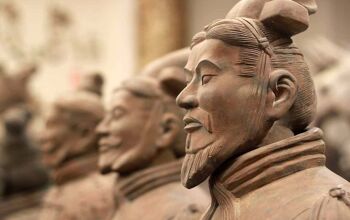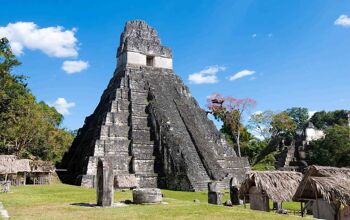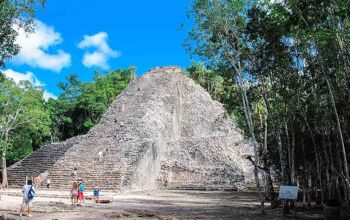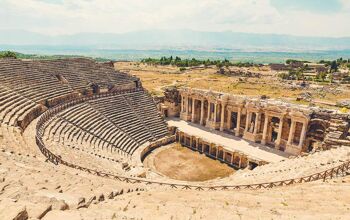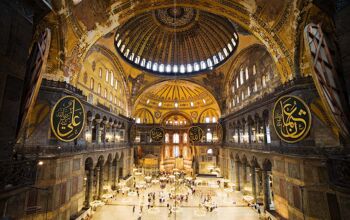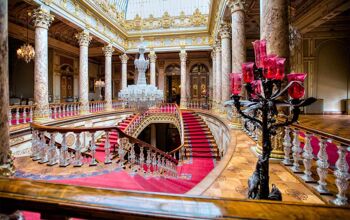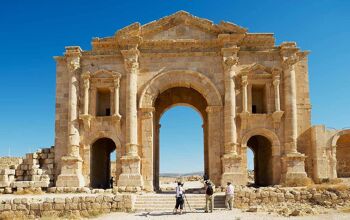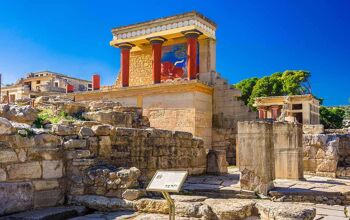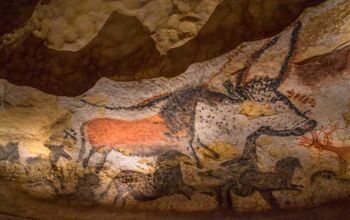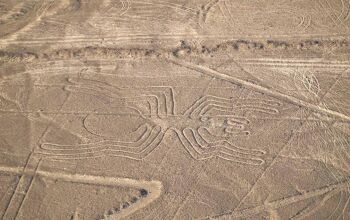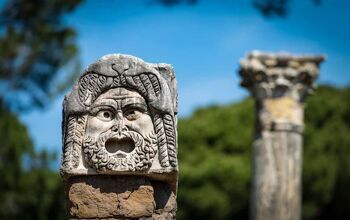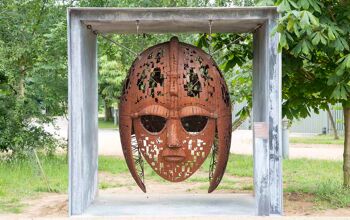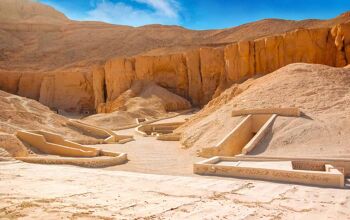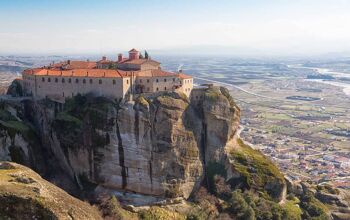The Ancient Wonders of the World
What are the original 7 Ancient Wonders of the World?
The Seven Ancient Wonders are: the Great Pyramid of Giza, the Statue of Zeus at Olympia, the Colossus of Rhodes, the Hanging Gardens of Babylon, the Temple of Artemis at Ephesus, the Mausoleum at Halicarnassus, and the Lighthouse of Alexandria. See our round-up for more details.
Who created the list of the Seven Ancient Wonders of the World?
The list was compiled during the Hellenistic period by Greek scholars and travellers. Writers such as Herodotus, Philo of Byzantium, and Antipater of Sidon helped immortalise the world’s greatest marvels of the time.
Are any of the ancient wonders of the world still standing? How many wonders of the world have been destroyed?
Only the Great Pyramid of Giza has survived the centuries relatively intact. The Temple of Artemis and the Statue of Zeus were lost to fire, while the Lighthouse of Alexandria, the Colossus of Rhodes, and the Mausoleum at Halicarnassus were destroyed by earthquakes.
You can visit the site (ruins) of the Mausoleum at Halicarnassus in Bodrum, on Turkey’s Turquoise Coast, and the Temple of Artemis at Ephesus. Sculptures from both can still be seen in the British Museum, quiet reminders of what once stood in splendour.
What are the greatest empires & civilisations in history?
Here are the 20 greatest human civilisations, in chronological order from oldest to most recent, that left behind incredible ancient ruins, sites and monuments for you to enjoy today:
Akkadian Empire (2334-2154 BC)
The Akkadian Empire encompassed the region of Mesopotamia, comprising modern-day Iraq, Syria, and parts of Iran and Turkey. Its headquarters were located in Akkad, in present-day Iraq. The Akkadians were renowned for being the first empire in history, known for their military conquests and the development of the Akkadian language and literature. In terms of architecture, they followed the traditions of the Sumerians, constructing impressive ziggurats and grand palaces.
Ancient Egyptian Empire (16th-11th centuries BC)
The Ancient Egyptian Empire, specifically the New Kingdom, held dominion over Egypt and parts of modern-day Sudan, Israel, and Palestine. The capital during this period was Thebes, known today as Luxor in Egypt. The empire is celebrated for its monumental architecture, including pyramids, temples, and tombs. Burial mounds, although more commonly associated with other ancient cultures, also played a role in Egyptian burial practices, highlighting their historical significance. Famous pharaohs like Ramses II left their mark, and the empire’s legacy includes hieroglyphic writing, a complex polytheistic religion, and intricate burial practices. Egyptian architecture showcased structures such as the temples of Karnak and Luxor, the Valley of the Kings’ elaborate tombs, and the iconic Pyramids of Giza.
Ancient Greek Empire (5th-4th century BC)
The Ancient Greek Empire, dating back to ancient times, encompassed mainland Greece and its surrounding regions. It was renowned for its city-states, such as Athens and Sparta, which thrived culturally, intellectually, and militarily. The Greeks made significant contributions to philosophy, art, literature, and democracy, which shaped Western civilisation. Their legacy lives on through enduring literary works like the Iliad and Odyssey, architectural marvels like the Parthenon, and enduring philosophical concepts from scholars like Plato and Aristotle.
Persian Empire (Achaemenid Empire, 550-330 BC)
The Achaemenid Persian Empire extended across a vast expanse, from Egypt and Greece to the Indus Valley. The empire’s capital was Persepolis, located in present-day Iran. The Achaemenids were distinguished by their efficient administration, the establishment of the Royal Road (an extensive network of roads), and the development of the Persian religion of Zoroastrianism. Architecturally, they built magnificent palaces, massive columned halls, and grand staircases. Persepolis exemplifies its architectural prowess through elaborate stone reliefs and monumental structures.
Maurya Empire (322-185 BC)
The Maurya Empire held dominion over the Indian subcontinent. Its headquarters resided in Pataliputra, modern-day Patna in India. Notable achievements of the Maurya Empire include the unification of India by Chandragupta Maurya, Ashoka’s conversion to Buddhism and promotion of dharma (moral law), and the establishment of a robust centralised administration. In terms of architecture, the Maurya Empire is known for its rock-cut structures, exemplified by the magnificent cave temples at Ajanta and Ellora. Emperor Ashoka also erected numerous pillars engraved with edicts across the empire.
Carthaginian Empire (7th-2nd centuries BC)
The Carthaginian Empire, centred in the ancient city of Carthage (in modern-day Tunisia). Carthage was a prominent maritime power that controlled territories in North Africa, parts of the Iberian Peninsula, and Sicily. The empire is renowned for its prowess in trade, seafaring, and military campaigns, particularly the Punic Wars against Rome. The Carthaginians built monumental structures such as harbours, temples, and fortifications, although much of it was lost to history due to conflicts and subsequent reconstructions.
Han Dynasty (206 BC – 220 AD)
The Han Dynasty ruled over China, parts of Central Asia, and Korea. Its capital was Chang’an, known today as Xi’an in China (home to the famous Terracotta Warriors). It was renowned for its centralised bureaucracy, technological and agricultural advancements, the establishment of the Silk Road trade route, and the influence of Confucianism. The Hans built grand palaces, ceremonial tombs, and impressive infrastructure projects, most notably, the Great Wall of China.
Roman Empire (27 BC – AD 476)
Ancient Rome, the headquarters of the Roman Empire, covered the Mediterranean Basin, including parts of Europe, North Africa, and the Middle East. The empire left an indelible mark on history through its extensive road network, republican and imperial governance systems, engineering marvels like aqueducts and colosseums, the development of Roman law, and cultural assimilation. Architecturally, the Romans drew inspiration from classical Greek styles, resulting in structures such as the Colosseum, Pantheon, and grand aqueducts. See our round-up of the 50 greatest Roman ruins.
Persian Empire (Sassanian Empire, 224-651 AD)
This second Persian Empire covered Persia (modern-day Iran), Mesopotamia, and significant parts of Central Asia, the Caucasus, and the Arabian Peninsula. Its capital was Ctesiphon, located near present-day Baghdad in Iraq. It left a lasting impact with its political, administrative, and cultural achievements. Notable contributions include advancements in art, literature, and architecture, such as the construction of majestic palaces, grand cities, and iconic structures like the Taq Kasra, a large arch considered a symbol of Persian architecture.
The Maya Empire (250-900 AD)
This complex Mesoamerican civilisation, renowned for its advanced culture and accomplishments, flourished across present-day southern Mexico, Guatemala, Belize, El Salvador, and Honduras. The Maya were known for their remarkable achievements in architecture, mathematics, astronomy, art, and writing systems. They constructed impressive cities with monumental temples and palaces, developed a sophisticated calendar, and left behind intricate hieroglyphic inscriptions that offer insights into their history and beliefs. Some Maya ruins are beautifully preserved, providing further insights into their civilisation. Its headline legacy is Chichen Itza, but there are evocative Mayan ruins across the Yucatan and long the Mayan Riviera.
Byzantine Empire (330-1453 AD)
The Byzantines thrived as the Eastern Roman Empire, spanning regions across Europe, the Middle East, and North Africa. Constantinople, present-day Istanbul in Turkey, stood as its capital. Notable for preserving and transmitting classical Greek and Roman knowledge, the empire is remembered for Justinian’s codification of Roman law known as the Justinian Code, Byzantine art and architecture, and the influence of Eastern Orthodox Christianity. Byzantine architecture showcased distinctive features, including domes, mosaics, and basilicas, with the Hagia Sophia being a prominent example.
Gupta Empire (4th-6th centuries AD)
India’s Gupta Empire ruled over a significant portion of northern India. Its capital was Pataliputra, present-day Patna in India. The empire is widely regarded as the Golden Age of India, known for its achievements in mathematics, science, arts, and literature. It promoted Hinduism and witnessed advancements in various fields, including metallurgy, astronomy, and medicine. Remnants today can be seen in intricate stone carvings in temple structures, exemplified by the Dashavatara Temple in Deogarh.
The Tang Dynasty (618-907 AD)
Headquartered in Chang’an, the Tang is considered the golden age of Chinese civilisation. It achieved remarkable political stability, territorial expansion, and economic prosperity. The dynasty fostered a cosmopolitan society that facilitated cultural exchange with neighbouring regions and beyond, resulting in notable achievements in poetry, painting, and porcelain production. It also implemented effective governance systems and promoted Buddhism as a prominent religion within the empire.
Abbasid Caliphate (750-1258 AD)
The Abbasid Caliphate emerged as the second Islamic caliphate after the Umayyad Caliphate. It spanned a vast area, including the Middle East, North Africa, Persia, and parts of Central Asia. The capital of the Abbasid Caliphate was Baghdad in present-day Iraq. Known for its intellectual and cultural achievements, the empire fostered a flourishing Islamic Golden Age marked by advancements in science, mathematics, philosophy, and literature. Architecturally, the Abbasids combined influences from diverse cultures, resulting in the development of splendid palaces, mosques, and gardens
Viking Empire (8th-11th centuries AD)
The Viking Empire, also known as the Norse seafaring culture, emerged in the late 8th century CE and expanded throughout the Viking Age, reaching its height in the 9th to 11th centuries. The Vikings originated from Scandinavian regions, but their seafaring and trading activities allowed them to influence territories across Europe, including the British Isles, Iceland, Greenland, and parts of Russia. Known for their skilled navigation, military prowess, and exploration, the Vikings left a lasting impact on the regions they encountered. They left a lasting legacy of wooden longhouses, stave churches, fortified structures like Viking ring fortresses and some remarkable ships.
Khmer Empire (9th-15th century AD)
The Khmer Empire encompassed large parts of Southeast Asia, including present-day Cambodia, Thailand, Laos, and Vietnam. The empire’s capital was Angkor, renowned for its majestic temple complexes like Angkor Wat and Bayon. The Khmer Empire is celebrated for its sophisticated irrigation systems, advanced agricultural techniques, and intricate temple architecture. The Khmers left behind massive stone temples adorned with intricate bas-reliefs and intricate sculptural details, displaying a fusion of Hindu and Buddhist influences. Similarly, the Minoan civilisation is known for its impressive architectural achievements, particularly the palace complexes like Knossos, which also reflect a high degree of sophistication and cultural influence.
Mongol Empire (1206-1368 AD)
Founded by Genghis Khan in the 13th century, it became the largest contiguous empire in history, stretching from Eastern Europe to Asia. It reached its peak under Kublai Khan, with its capital established in Khanbaliq, present-day Beijing, China. The Mongols were renowned for their military conquests, efficient administration, and the Pax Mongolica, a period of stability and cultural exchange. Influenced by Chinese, Persian, and Central Asian styles, the Mongols built structures such as the palaces and temples of Karakorum and the Yuan Dynasty architecture in China.
The Ming Dynasty (1368-1644 AD)
Headquartered in Beijing, the Ming witnessed a restoration of Chinese rule after the Mongol-led Yuan Dynasty. The Dynasty is known for its significant contributions to maritime exploration, exemplified by the expeditions of the renowned admiral Zheng He. The dynasty constructed impressive architectural landmarks such as the Forbidden City and the Temple of Heaven. It revived and enhanced Chinese arts, literature, and philosophy, leaving a profound cultural legacy that continues to influence Chinese culture to this day.
Inca Empire (13th-16th centuries AD)
The Inca Empire flourished over a vast territory along the western coast of South America years ago. Its capital was Cusco in present-day Peru. It was renowned for its sophisticated administrative system, extensive road network (Qhapaq Ñan), and impressive stone masonry. Notable architectural achievements include Machu Picchu, the mountain citadel, and Sacsayhuaman, a colossal fortress with precisely fitted stones.
Aztec Empire (14th-16th centuries AD)
The Aztecs territorial domain covered much of central Mexico. The empire’s capital was Tenochtitlan, situated on an island in Lake Texcoco (present-day Mexico City). The Aztecs were known for their military might, tribute system, complex social structure, and monumental architecture. Their burial practices, often associated with the remains of ‘dead men,’ provide significant insights into their societal and religious customs. They constructed impressive pyramids, temples, and palaces, with the Templo Mayor being the most notable example of their architectural prowess.
Ottoman Empire (15th-17th centuries AD)
Established in 1299, the Ottomans reached their peak between the 15th and 17th centuries, encompassing vast territories across Europe, Asia, and Africa. Its capital, Constantinople, was renamed Istanbul and became a regional centre of power and culture. The empire was renowned for its military prowess, efficient administrative system, and cultural achievements. Ottoman architecture featured grand mosques, palaces, and public buildings characterised by intricate geometric patterns, domes, and minarets. Many can be seen to this day in modern-day Istanbul, notably its world-famous gargantuan mosques.
Mughal Empire (1526-1857 AD)
This Indian subcontinent empire was established by Babur and reached its height under emperors like Akbar, Jahangir, and Shah Jahan. The empire covered a vast region, including present-day India, Pakistan, and Bangladesh. The Mughals were known for their administrative prowess, religious tolerance, and patronage of art, literature, and architecture. Their architectural style blended Persian, Islamic, and indigenous Indian elements, resulting in iconic structures such as the Taj Mahal, Red Fort, and Jama Masjid.
British Empire (16th-20th centuries AD)
The British Empire was one of the largest and most influential empires in history. At its height, it covered territories across the globe, including large parts of North America, Australia, India, Africa, and the Caribbean. The empire had no specific headquarters but was governed from various administrative centres, including London. It was known for its maritime supremacy, vast colonial holdings, and the spread of British culture, legal systems, and language. Architecturally, it left a legacy of styles, from neoclassical government buildings to Victorian-era structures.
Start with Greece
Greece’s cultural heritage is a rich and diverse tapestry, woven from the threads of ancient civilisations, mythological legends, and historical events. The country’s ancient ruins are a testament to this heritage, showcasing the artistic, intellectual, and scientific achievements of the ancient Greeks.
Athens is home to a plethora of notable archaeological sites, each with its own unique history and significance. The Acropolis, a UNESCO World Heritage Site, is one of the most famous ancient ruins in Greece, featuring the iconic Parthenon. Other notable sites include the Ancient Agora of Athens, and the nearby Delphi. The Site of Olympia, the birthplace of the Olympic Games and around 3-hours’ drive, is also a must-visit, showcasing the country’s rich cultural heritage and historical significance.
In southern Greece, explore the ancient city of Mycenae, a fortified city that dates back to the Bronze Age, while in northern Greece, the stunning monasteries of Meteora are a must-see. The dates of these ancient ruins span from the Early Bronze Age to the Roman Empire, providing a comprehensive look at the country’s historical significance.
Responsible Tourism and Preservation
As the number of visitors to ancient ruins continues to grow, it’s essential to promote responsible tourism and preservation practices. Visitors can help preserve these sites by respecting local regulations, not littering, and not removing any artefacts or stones. The Cornish Ancient Sites Protection Network (CASPN) is a great example of a group working to protect and preserve ancient sites, and their famous motto, ‘don’t change the site, let the site change you’ is a great reminder of the importance of responsible tourism. By being mindful of our impact on these sites, we can help ensure that they remain intact for future generations to enjoy.
Also see our round-ups of the world’s greatest historical buildings and the world’s best Roman ruins.


